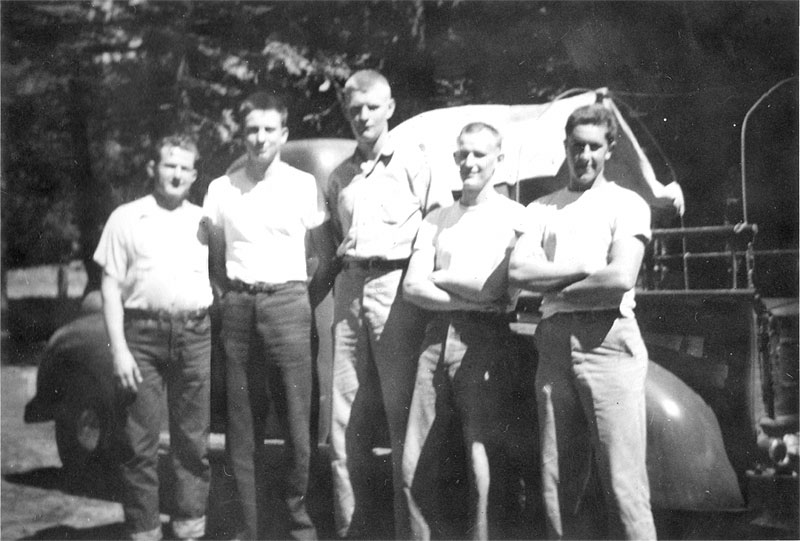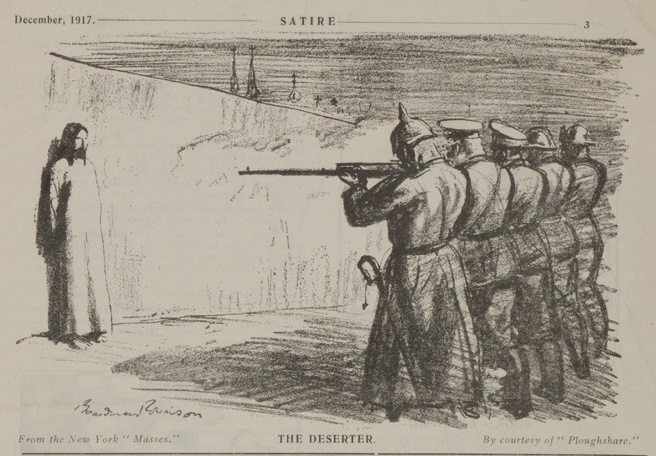|
OSRD
The Office of Scientific Research and Development (OSRD) was an agency of the United States federal government created to coordinate scientific research for military purposes during World War II. Arrangements were made for its creation during May 1941, and it was created formally by Executive Order 8807 on June 28, 1941. It superseded the work of the National Defense Research Committee (NDRC), was given almost unlimited access to funding and resources, and was directed by Vannevar Bush, who reported only to President Franklin Delano Roosevelt. The research was widely varied, and included projects devoted to new and more accurate bombs, reliable detonators, work on the proximity fuze, guided missiles, radar and early-warning systems, lighter and more accurate hand weapons, more effective medical treatments (including work to make penicillin at scale, which was necessary for its use as a drug), more versatile vehicles, and, the most secret of all, the S-1 Section, which later became t ... [...More Info...] [...Related Items...] OR: [Wikipedia] [Google] [Baidu] |
Vannevar Bush
Vannevar Bush ( ; March 11, 1890 – June 28, 1974) was an American engineer, inventor and science administrator, who during World War II headed the U.S. Office of Scientific Research and Development (OSRD), through which almost all wartime military R&D was carried out, including important developments in radar and the initiation and early administration of the Manhattan Project. He emphasized the importance of scientific research to national security and economic well-being, and was chiefly responsible for the movement that led to the creation of the National Science Foundation. Bush joined the Department of Electrical Engineering at Massachusetts Institute of Technology (MIT) in 1919, and founded the company that became the Raytheon Company in 1922. Bush became vice president of MIT and dean of the MIT School of Engineering in 1932, and president of the Carnegie Institution of Washington in 1938. During his career, Bush patented a string of his own inventions. He is known ... [...More Info...] [...Related Items...] OR: [Wikipedia] [Google] [Baidu] |
S-1 Section
The S-1 Executive Committee laid the groundwork for the Manhattan Project by initiating and coordinating the early research efforts in the United States, and liaising with the Tube Alloys Project in Britain. In the wake of the discovery of nuclear fission in December 1938, the possibility that Nazi Germany might develop nuclear weapons prompted Leo Szilard and Eugene Wigner to draft the Einstein–Szilárd letter to the President of the United States, Franklin D. Roosevelt, in August 1939. In response, the Advisory Committee on Uranium was created at the National Bureau of Standards under the chairmanship of Lyman J. Briggs to determine the feasibility of nuclear weapons. In June 1940, the National Defense Research Committee (NDRC) was created to coordinate defense-related research, and the Advisory Committee on Uranium became the Uranium Committee of the NDRC. In June 1941, Roosevelt created the Office of Scientific Research and Development under the leadership of Vannevar Bush ( ... [...More Info...] [...Related Items...] OR: [Wikipedia] [Google] [Baidu] |
National Defense Research Committee
The National Defense Research Committee (NDRC) was an organization created "to coordinate, supervise, and conduct scientific research on the problems underlying the development, production, and use of mechanisms and devices of warfare" in the United States from June 27, 1940, until June 28, 1941. Most of its work was done with the strictest secrecy, and it began research of what would become some of the most important technology during World War II, including radar and the atomic bomb. It was superseded by the Office of Scientific Research and Development in 1941, and reduced to merely an advisory organization until it was eventually terminated during 1947. Organization The NDRC was created by an order of President Franklin Delano Roosevelt on June 27, 1940. It was part of the Council of National Defense, which had been created during 1916 to coordinate industry and resources for national security purposes. Vannevar Bush, the director of the Carnegie Institution, had pressed for ... [...More Info...] [...Related Items...] OR: [Wikipedia] [Google] [Baidu] |
Manhattan Project
The Manhattan Project was a research and development undertaking during World War II that produced the first nuclear weapons. It was led by the United States with the support of the United Kingdom and Canada. From 1942 to 1946, the project was under the direction of Major General Leslie Groves of the United States Army Corps of Engineers, U.S. Army Corps of Engineers. Nuclear physicist Robert Oppenheimer was the director of the Los Alamos Laboratory that designed the actual bombs. The Army component of the project was designated the Manhattan District as its first headquarters were in Manhattan; the placename gradually superseded the official codename, Development of Substitute Materials, for the entire project. Along the way, the project absorbed its earlier British counterpart, Tube Alloys. The Manhattan Project began modestly in 1939, but grew to employ more than 130,000 people and cost nearly US$2 billion (equivalent to about $ billion in ). Over 90 percent of th ... [...More Info...] [...Related Items...] OR: [Wikipedia] [Google] [Baidu] |
United States National Science Foundation
The National Science Foundation (NSF) is an independent agency of the United States government that supports fundamental research and education in all the non-medical fields of science and engineering. Its medical counterpart is the National Institutes of Health. With an annual budget of about $8.3 billion (fiscal year 2020), the NSF funds approximately 25% of all federally supported basic research conducted by the United States' colleges and universities. In some fields, such as mathematics, computer science, economics, and the social sciences, the NSF is the major source of federal backing. The NSF's director and deputy director are appointed by the President of the United States and confirmed by the United States Senate, whereas the 24 president-appointed members of the National Science Board (NSB) do not require Senate confirmation. The director and deputy director are responsible for administration, planning, budgeting and day-to-day operations of the foundation, while ... [...More Info...] [...Related Items...] OR: [Wikipedia] [Google] [Baidu] |
Civilian Public Service
The Civilian Public Service (CPS) was a program of the United States government that provided conscientious objectors with an alternative to military service during World War II. From 1941 to 1947, nearly 12,000 draftees, willing to serve their country in some capacity but unwilling to perform any type of military service, accepted assignments in "work of national importance" in 152 CPS camps throughout the United States and Puerto Rico. Draftees from the historic peace churches and other faiths worked in areas such as soil conservation, forestry, fire fighting, agriculture, under the supervision of such agencies as the U.S. Forest Service, the Soil Conservation Service, and the National Park Service. Others helped provide social services and mental health services. The CPS men served without wages and minimal support from the federal government. The cost of maintaining the CPS camps and providing for the needs of the men was the responsibility of their congregations and famili ... [...More Info...] [...Related Items...] OR: [Wikipedia] [Google] [Baidu] |
Proximity Fuze
A proximity fuze (or fuse) is a Fuze (munitions), fuze that detonates an Explosive material, explosive device automatically when the distance to the target becomes smaller than a predetermined value. Proximity fuzes are designed for targets such as planes, missiles, ships at sea, and ground forces. They provide a more sophisticated trigger mechanism than the common contact fuze or timed fuze. It is estimated that it increases the lethality by 5 to 10 times, compared to these other fuzes. Background Before the invention of the proximity fuze, detonation was induced by direct contact, a timer set at launch or an altimeter. All of these earlier methods have disadvantages. The probability of a direct hit on a small moving target is low; a shell that just misses the target will not explode. A time- or height-triggered fuze requires good prediction by the gunner and accurate timing by the fuze. If either is wrong, then even accurately aimed shells may explode harmlessly before reaching ... [...More Info...] [...Related Items...] OR: [Wikipedia] [Google] [Baidu] |
Ancel Keys
Ancel Benjamin Keys (January 26, 1904 – November 20, 2004) was an American physiologist who studied the influence of diet on health. In particular, he hypothesized that replacing dietary saturated fat with polyunsaturated fat reduces cardiovascular heart disease. Modern dietary recommendations by health organizations, systematic reviews, and national health agencies corroborate this. Keys studied starvation in men and published ''The Biology of Human Starvation'' (1950), which remains the only source of its kind. He examined the epidemiology of cardiovascular disease and was responsible for two famous diets: K-rations, formulated as balanced meals for combat soldiers in World War II, and the Mediterranean diet, which he popularized with his wife Margaret. Early life Ancel Keys was born in Colorado Springs in 1904 to Benjamin Pious Keys (1883–1961) and Carolyn Emma Chaney (1885–1960), the sister of actor and director Lon Chaney. In 1906 they moved to San Francisco befo ... [...More Info...] [...Related Items...] OR: [Wikipedia] [Google] [Baidu] |
Conscientious Objectors
A conscientious objector (often shortened to conchie) is an "individual who has claimed the right to refuse to perform military service" on the grounds of freedom of thought, conscience, or religion. The term has also been extended to objecting to working for the military–industrial complex due to a crisis of conscience. In some countries, conscientious objectors are assigned to an alternative civilian service as a substitute for conscription or military service. A number of organizations around the world celebrate the principle on May 15 as International Conscientious Objection Day. On March 8, 1995, the United Nations Commission on Human Rights resolution 1995/83 stated that "persons performing military service should not be excluded from the right to have conscientious objections to military service". This was re-affirmed on April 22, 1998, when resolution 1998/77 recognized that "persons lreadyperforming military service may ''develop'' conscientious objections". Hi ... [...More Info...] [...Related Items...] OR: [Wikipedia] [Google] [Baidu] |
Bed Rest
Bed rest, also referred to as the rest-cure, is a medical treatment in which a person lies in bed for most of the time to try to cure an illness. Bed rest refers to voluntarily lying in bed as a treatment and not being confined to bed because of a health impairment which physically prevents leaving bed. The practice is still used although a 1999 systematic review found no benefits for any of the 17 conditions studied and no proven benefit for any conditions at all, beyond that imposed by symptoms. In the United States, nearly 20% of pregnant women have some degree of restricted activity prescribed despite the growing data showing it to be dangerous, causing some experts to call its use "unethical". Medical uses Extended bed rest has been proven to be a potentially harmful treatment needing more careful evaluation. Pregnancy Women who are pregnant and are experiencing early labor, vaginal bleeding, and cervix complications have been prescribed bed rest. This practice in 2013 wa ... [...More Info...] [...Related Items...] OR: [Wikipedia] [Google] [Baidu] |
Library Of Congress
The Library of Congress (LOC) is the research library that officially serves the United States Congress and is the ''de facto'' national library of the United States. It is the oldest federal cultural institution in the country. The library is housed in three buildings on Capitol Hill in Washington, D.C.; it also maintains a conservation center in Culpeper, Virginia. The library's functions are overseen by the Librarian of Congress, and its buildings are maintained by the Architect of the Capitol. The Library of Congress is one of the largest libraries in the world. Its "collections are universal, not limited by subject, format, or national boundary, and include research materials from all parts of the world and in more than 470 languages." Congress moved to Washington, D.C., in 1800 after holding sessions for eleven years in the temporary national capitals in New York City and Philadelphia. In both cities, members of the U.S. Congress had access to the sizable collection ... [...More Info...] [...Related Items...] OR: [Wikipedia] [Google] [Baidu] |
University Of Minnesota
The University of Minnesota, formally the University of Minnesota, Twin Cities, (UMN Twin Cities, the U of M, or Minnesota) is a public university, public Land-grant university, land-grant research university in the Minneapolis–Saint Paul, Twin Cities of Minneapolis and Saint Paul, Minnesota, United States. The Twin Cities campus comprises locations in Minneapolis and Falcon Heights, Minnesota, Falcon Heights, a suburb of St. Paul, approximately apart. The Twin Cities campus is the oldest and largest in the University of Minnesota system and has the List of United States university campuses by enrollment, ninth-largest main campus student body in the United States, with 52,376 students at the start of the 2021–22 academic year. It is the Flagship#Colleges and universities in the United States, flagship institution of the University of Minnesota System, and is organized into 19 colleges, schools, and other major academic units. The Minnesota Territorial Legislature drafted a ... [...More Info...] [...Related Items...] OR: [Wikipedia] [Google] [Baidu] |



.jpg)


